Tour de France
Covering more than 3,000 miles, from the mountain passes of the Alps and the Pyrenees to the glamorous streets of Paris, the Tour de France is the highlight of the competitive cycling calendar.
The world’s greatest bike race
For three weeks in July every year France comes out to be part of “La Grande Boucle”. It is a marvellous spectacle, as the colourful peloton sweeps through the stunning French countryside, followed by a cavalcade of support vehicles and cheered on by huge crowds. Full of gruelling climbs, spectacular descents and exciting sprints, there is nothing quite like the Tour de France.
If you are a cycling fan, or just want to see more of the France it travels through, Eurotunnel can help you be part of the world’s greatest bike race.
A brief Tour de France history
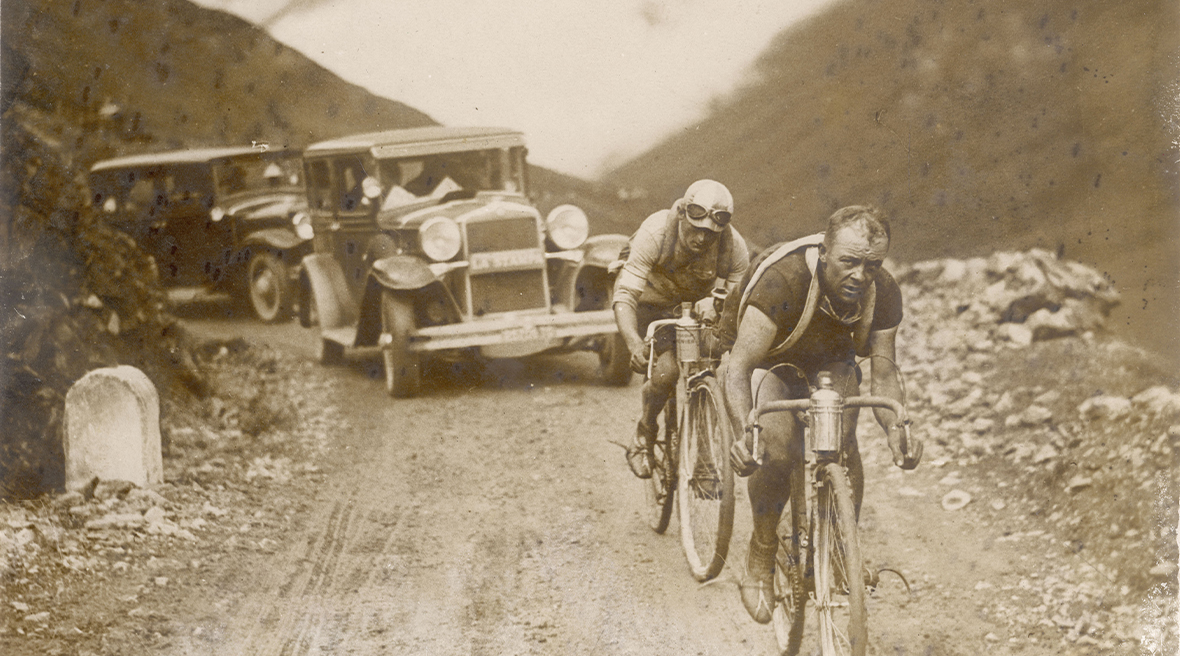
Riders in the early Tours struggled up poor mountain roads and with little support
Géo Lefèvre, a cycling journalist with a dream was the initial driving force behind the Tour de France. In 1902 he came up with the idea to boost the sales of the struggling newspaper L’Auto. The next summer a group of sixty cyclists set out onto the streets of Montgeron, attracting much attention and gathering a significant crowd of spectators. From this point on, the Tour de France was born and France became the focus of a global sporting spotlight every July.
Miguel Indurain, Jacques Anquetil, Bernard Hinault and Eddy Merckx currently hold the record for the highest number of yellow jersey wins, with five Tour wins each. Merckx and the Isle of Man sprinter Mark Cavendish share the most stage wins, with 34 apiece.
The teams and the competitions
Around 20 teams take part in the Tour de France, with 8 riders in each team. Most teams have a lead rider, with the rest of the team – the domestiques – working together for their benefit. Some of the leading current teams include Ineos Grenadiers and Jumbo-Visma.
Riders compete in a number of classifications. The top endurance riders battle it out in the General Classification (GC), with the leading GC rider wearing the famous yellow jersey on each stage. There are also competitions for the sprinters, the best mountain climbers and the best young rider.
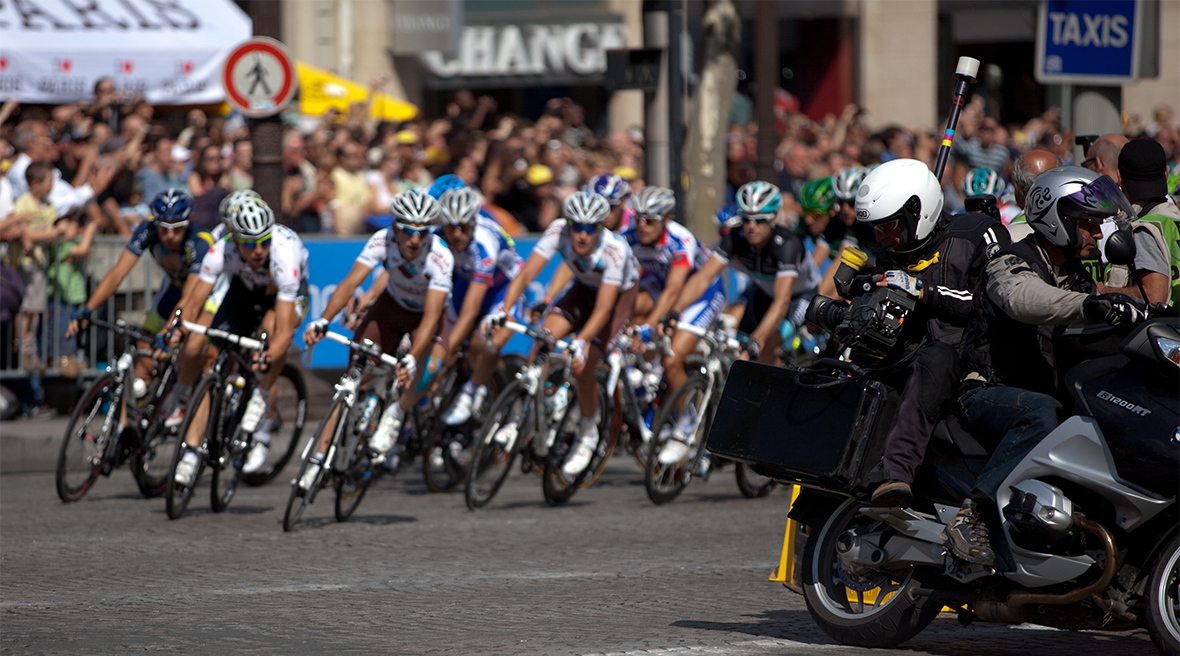
Towns come to a standstill when the peloton swings through!
The Grand Départ
The Tour de France organisers like to take the race beyond their own borders, and in recent years many different countries have hosted the Grand Départ, the opening stage with all its hype, fanfare and media attention.
The Netherlands was the first country outside France to have this honour in 1954, and subsequently Belgium, Germany, Switzerland, Luxembourg, Spain, Ireland, Monaco, the UK and Denmark have all launched the race.
The decisive stages – the mountains
It is never easy to predict the decisive Tour de France stage when the eventual winner “breaks” the rest of the peloton and establishes himself as the leader. But usually it will be in the gruelling mountain stages. Some have become iconic, like Mont Ventoux and Alpe d’Huez. There is usually two or three of these classic climbs in each edition, and they draw cycling fans in huge numbers.
The mountain stages slow the riders down, sometimes almost to a standstill. Rather than seeing a blur as the peloton passes through a small village, if you stand in the right place you may be able to get a great photo of your favourite rider. But don’t get too close – there have been incidents when fans have caused riders to come off their bikes.
In order to watch the mountain stages it is important to arrive on the mountain-side well before the publicity caravans come by, as these treacherous roads usually close in plenty of time for safety reasons. The crowds here can be raucous, chaotic and well-lubricated!
Mont Ventoux
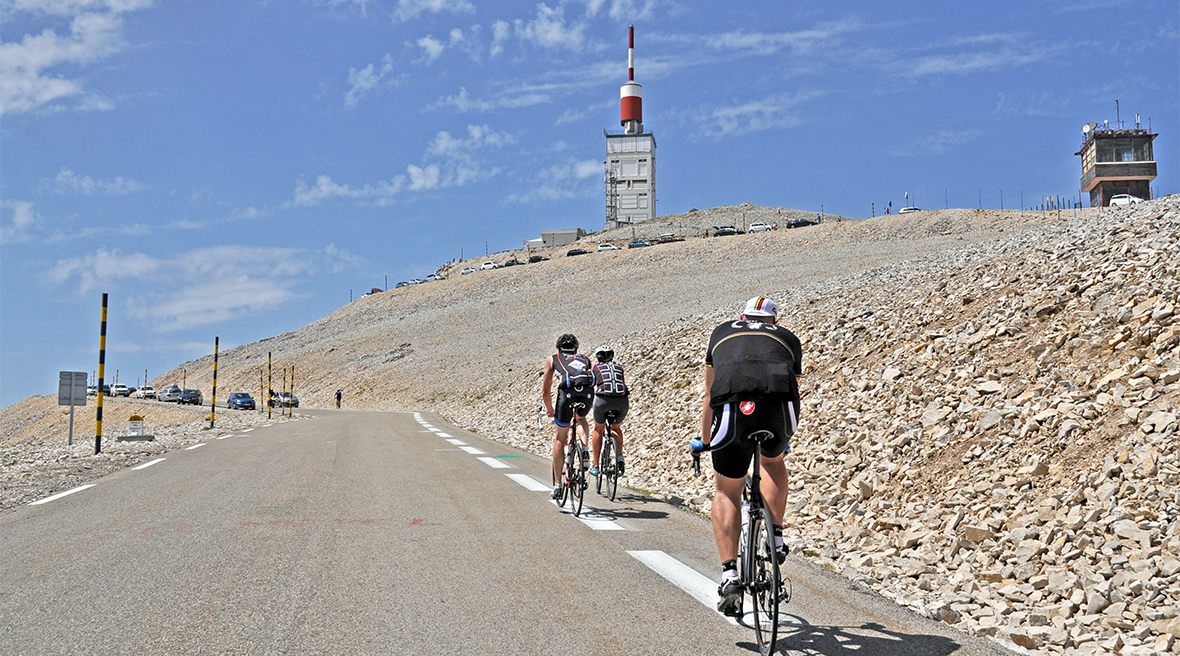
High winds and extreme heat make Mont Ventoux one of the Tour’s most challenging climbs
The ‘Beast of Provence’, the 1,909 metre Mont Ventoux has featured in the Tour eighteen times. The top of Ventoux is bare of vegetation, giving it a lunar-like feel, adding to its unique appeal as a mountain stage. With an average gradient of 7.43% on the 13.5 mile ascent from Bédoin, it is one of the most gruelling climbs in world cycling. High winds and extreme heat can make it treacherous. In 1967 Mont Ventoux claimed the life of British rider Tommy Simpson, who collapsed half a mile from the summit.
Alpe d’Huez
The Alpine peak of Alpe d’Huez has been called the ‘Mecca of cycling’. Its 21 bends act as staging posts up the nine mile long climb to the summit. The gradient reaches 13% at times. It was first ridden in the Tour in 1952 and is on the schedule regularly. Winning a stage at Alpe d’Huez is a career-defining achievement, and the bends on the climb are named after previous winners. Alpe d’Huez is a popular ski resort so travel links are good.
La Planche des Belles Filles
A relative newcomer to the Tour, La Planche des Belles Filles in the isolated Vosges mountains is already a firm favourite among cycling fans, and has featured numerous times since its debut in 2012. The brutal gradients of the 3.7 mile climb make for a punishing climax to a stage, with one section reaching 28% just before the top. You can drive to La Planche des Belles Filles from the Eurotunnel Le Shuttle Calais terminal in around six and a half hours via Reims (with tolls).
Rest days and the individual time trials
There are two rest days on the Tour. For the riders it is a chance to let weary muscles recover; for Tour followers it can be a chance to explore more of France! Here is our guide to some of the best cycling regions in the country.
There is usually two individual time trials in every Tour, with the final one coming on the penultimate day of the official competition – which also marks the last chance for riders to stake their claim for the podium places.
Race tradition dictates that the GC leader on the final day goes unchallenged so that they and their team can enjoy the parade into Paris as a celebration for their hard work – and the riders on the winning team have been known to enjoy a glass of champagne as they pedal.
The final stage in Paris
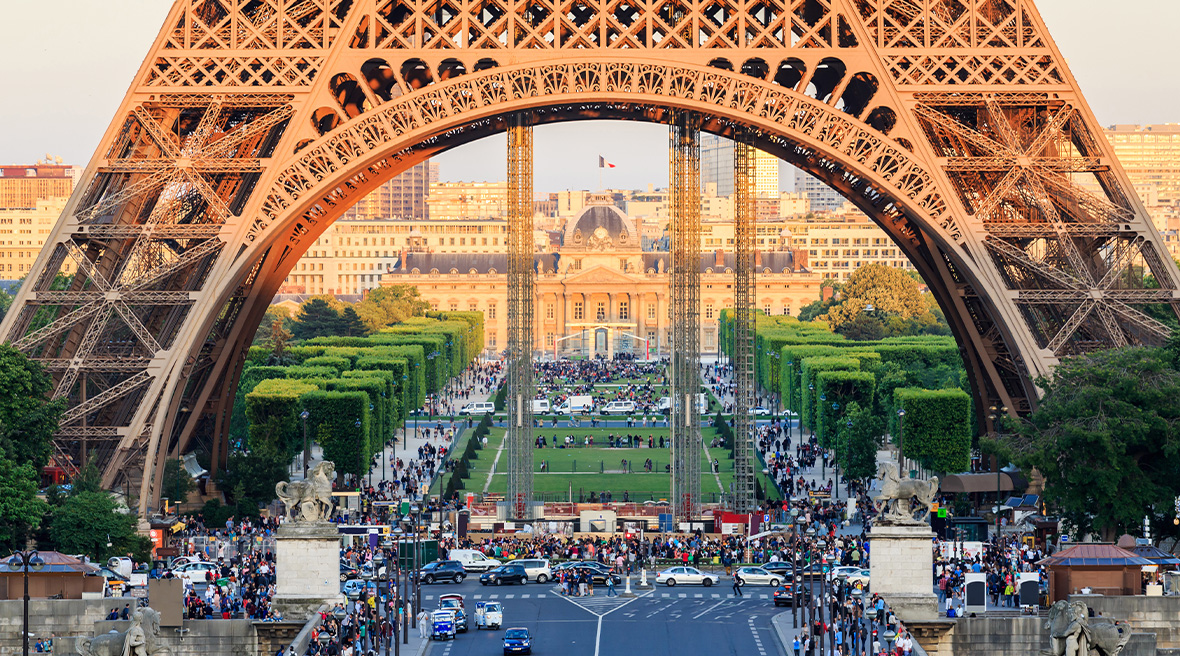
As the sun sets in Paris, the Tour comes to a thrilling end
Once in the capital, the sprinters are back fighting for the final few points in the green jersey competition.
Although the route of the Tour de France varies each year, the final stage has always been hosted by Paris. Climaxing along the Champs-Élysées, the finale has become a long standing French tradition, attracting huge crowds.
If you wish to be a part of this extraordinary experience, be sure to plan ahead in order to secure a good viewing spot – seats along the finish line can be very pricey, though you are certain to rub shoulders with some cycling royalty.
Cycle the Tour de France route
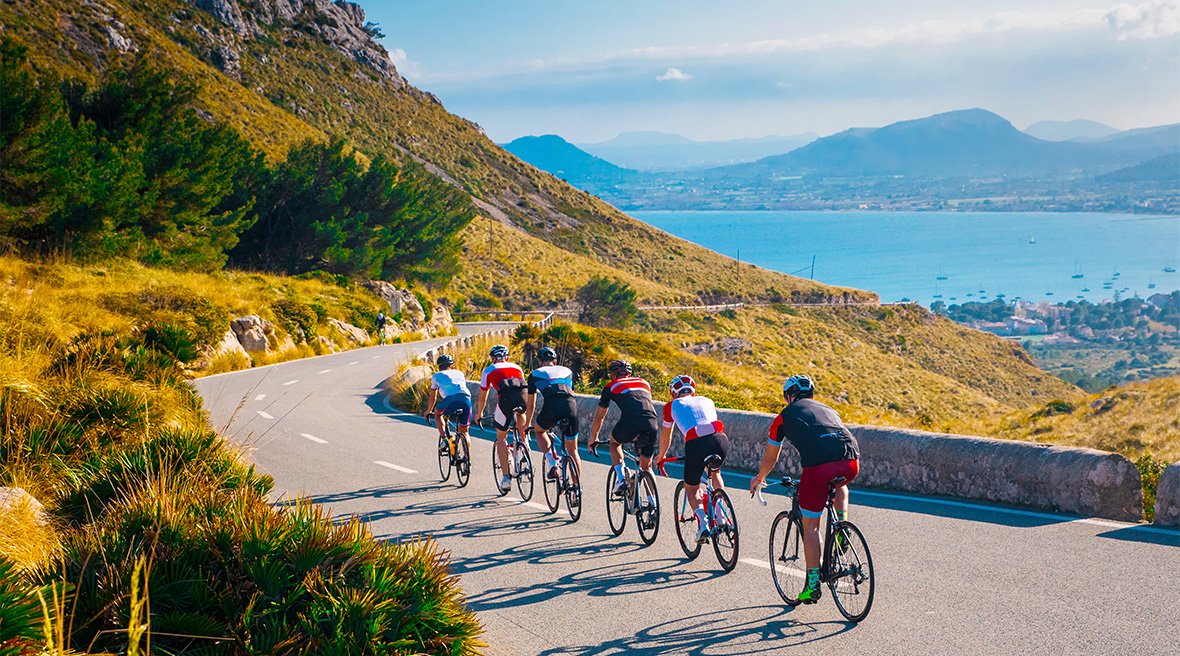
Your next cycling holiday: riding stages of the Tour de France
Riding the Tour route is on the bucket list of many amateur cyclists. It is possible, too, with the race taking place on public roads. You can book a tour with a travel company, and there are holidays available where you ride the route 24 hours before the Tour itself comes through. Or just do it yourself.
If you are taking your bike and watching the Tour at the same time, however, be prepared for road closures well in advance. Plus, it goes without saying that to attempt some of the mountain sections at any time of the year, you will have to be a strong cyclist.
See the Tour de France with Eurotunnel Le Shuttle
For cycling enthusiasts wishing to follow the race, the Tour de France is closer than you think, with the crossing on Eurotunnel Le Shuttle lasting just 35 minutes.
Of course, there are more leisurely ways to see France by bike. Why not cycle in the Loire Valley or ride the 1,500km La Vélomaritime from Dunkirk to Roscoff?